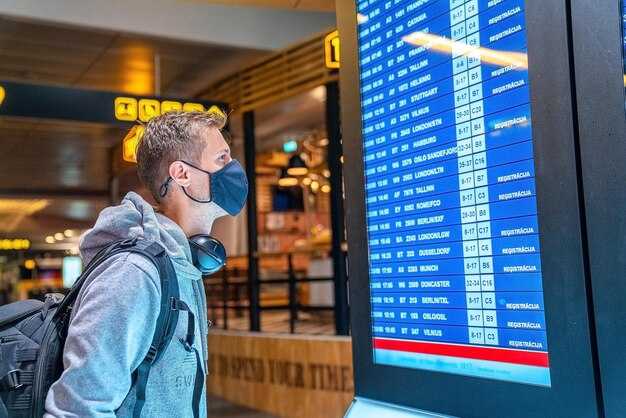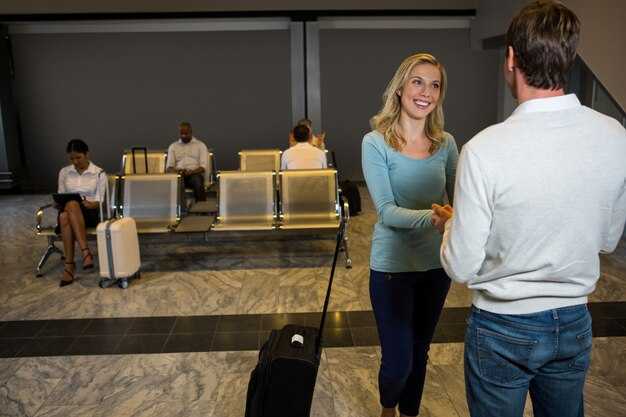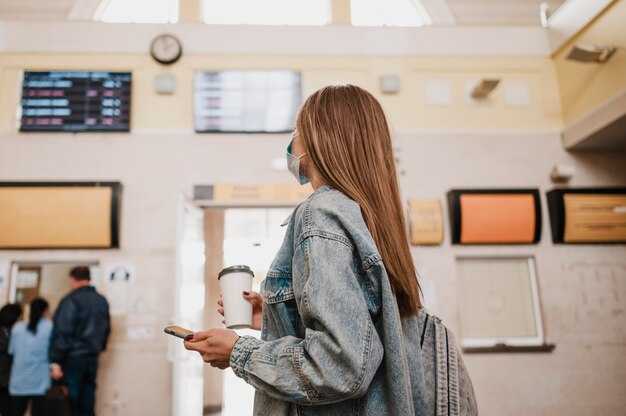
Raccomandazione: Book a premium taxi at the official desk on arrival to Rome; you’ll get a fixed fare and a quick transfer to the city center, typically around €30–40 depending on traffic. If you prefer a cost saver, app-based transfers and trusted shuttles offer competitive rates and clear pickup points in the arrivals zone.
After you clear baggage, use the arrivals hall to orient yourself: digital boards show the latest gate and baggage info, and a short walk finds currency services and newspaper stands. For real-time updates, load your travel apps and peek into a forum thread where recent travelers share tips about queues and delays at CIA.
Public options to reach central Rome are straightforward. CIA sits southeast of the city, and there is no direct train. The quickest option for many is a bus to Termini or a link via Anagnina Metro Station (Line A) with a single transfer. A typical ride costs a few euros for the bus and about €1.50 for a metro segment, with travel times around 40–60 minutes depending on traffic. Consider throughout the day service windows and note that apps can pinpoint the fastest current route.
For quick departures, arrive at least 2 hours before your flight if you’re checking bags, and use online check-in when possible. In the terminal, keep your boarding pass handy, and head to security with liquids in a clear bag. The premio lounge options, if you have time to spare, offer quiet spaces, newspapers, and power outlets for work or a quick test of your travel setup.
Nearby hotels offer practical stays if you’re catching an early flight or a late arrival. The area has lusso options and more budget-friendly smaller properties; many provide throughout stay transit transfers, breakfast inclusions, and reliable shuttle schedules. Check apps to compare rates, read quick questions on a local forum, and reserve in advance.
During your stay, keep a simple viaggio checklist: hold onto receipts, confirm pickup times, and know the shortest route to your next evento or meeting. Ciampino’s compact layout makes it easy to reach major parts of Rome quickly, and planning ahead helps you avoid unnecessary holds or detours. If you’re curious about current happenings, a quick glance at the newspaper stands or a forum post can answer common questions about transport and queues.
Ciampino CIA Airport Guide: Practical Tips for Arrivals, Departures, and Getting to Rome

Take the SIT Bus Shuttle to Termini–the fastest link to the city center. Inside the arrivals hall, go to marked stops just outside baggage belts and buy a ticket at the desk or from the driver. The sitbus runs every 20–30 minutes and drops you at Termini in about 40–60 minutes, depending on traffic and distances. The majority of travellers pick this option because it is cost-efficient and seamless, with straightforward transfers to local transportation. The SIT Bus Shuttle is très popular with travelers for its reliability. After Termini, walk to the Metro or catch a local railway line for onward connections. Note that taxi options can cost much more, especially during peak hours. During peak times, security lines are likely longer.
Arrivals: checks, bags, and boarding
Inside Ciampino, proceed to checks, then to the check-in area if you need to drop baggage; if you already have a boarding card, you still pass through security checks before heading to the gate. For carry-on, size and weight limits vary by airline; use the check-in desk or kiosk to confirm your bag fits. Keep your passport and boarding card ready for fast boarding. If you come with a return ticket, plan the return leg using the same route to avoid surprises. The marked signs guide you to the SIT bus stops, the railway entry, and the transfer points; staff assist if you need help.
Getting to the city: routes, costs, and timings
The most popular option is the SIT Bus Shuttle to Termini, offering a seamless path to central Rome. If you prefer a railway route, a local train option connects via nearby hubs to Roma Termini; distances to center vary by stop, and the route can be slower during peak hours but costs less. Ciampino mainly serves domestic and short EU routes. Advantages include affordability, consistency, and easy access to central districts. Various routes exist: direct bus to Termini, bus to Anagnina plus Metro, or a taxi for door-to-door service (costs rise quickly during peak periods). The overall plan remains manageable for a solo traveler; plan around 60 minutes from arrival to reaching the gate area on the other side. For the latest changes, check a forum or operator site before you travel; when you come, bring a map offline and a small plan for your first steps in the city.
Arrivals: Passport Control and Arrival Hall Overview
Present your passport and any required documents at passport control; if you are eligible for a fast-track line, choose it for a quick pass. Officially, Ciampino separates Schengen and non-Schengen arrivals into distinct queues, so wait times vary with flight volume. You must have your passport and boarding pass ready, and keep them handy, then head toward the arrival hall to keep walking time down.
After clearance, the arrival hall is compact with clear signage guiding you to baggage, reclaim, restrooms, and a few shops. Provided signage helps you navigate the space, and you’ll find a small but steady mix of options. If you want to eat or drink, with restaurants and drinks stands, you can grab a coffee or a pomodoro snack before you exit. This makes navigation easier for them and, overall, serves a large volume of arrivals efficiently. If you plan to shop, ask about a refund policy at participating stores.
To reach the citys core of Rome, you can book a taxi or pre-arranged shuttle; the vehicles are waiting outside the arrivals area. A taxi ride to downtown Rome costs roughly €30-45 in normal traffic and can rise during congestion. Buses to central Rome depart every 20-30 minutes, with a 40-60 minute trip depending on congestion. Private transfers and rideshares can be cheaper if booked in advance; booking ensures a driver is waiting outside, reducing wait. Walking to central Rome isn’t practical, so choose a vehicle or bus, and always check live updates on your phone for less waiting.
Baggage: Luggage Claim and Lost & Found at CIA
Go to the official baggage services desk in the arrivals hall to report a missing bag and start your claim. Have your baggage tag and passport ready to speed verification.
Bring the reference number you receive and a photo ID; staff will file a report, assign a case, and note the last known location of the luggage. This result informs the next steps and keeps your details on file.
If a bag is located, staff contact you by phone or email; you can also track progress using the official portal. Average updates occur within 24–72 hours, including alerts via SMS or email; a contactless option is available for changes through the online form to keep things smooth.
The Lost & Found desk, called Lost & Found, is part of the airport facilities and sits near the information desk in the arrivals area; hours vary by week. This place is convenient for travelers, and bring a photo of the bag, a description, and any identifiers to speed the claim. The office will hold found items for a set period and coordinate with you for pickup.
Tips to speed retrieval: list contents, include photos, and note valuables. For italys travelers, staff coordinate with local partners to move the process along, especially during peak times when the week gets busy. After you recover luggage, taxis, rides, and low-cost shuttles are available outside the terminal; distances to downtown Rome depend on traffic, but expect about 20–40 minutes of travel in normal conditions. Use official, contactless payments where possible to keep things smooth.
Ground Transport to Rome: Bus, Taxi, and Rail Options
heres the practical start: take the SIT Bus Shuttle from Ciampino to Roma Termini; this smooth option costs about €4–€6 and takes 40–60 minutes depending on italian roads and traffic. Tickets can be purchased online or at the stand; boarding from arrivals is straightforward; contactless payments are supported on many vehicles, and visa cards work for online purchases. If you land early, this route keeps things simple and makes onward rail connections easier for a short-stay itinerary. This answer aims to cover everything you need for a smooth first leg and to make your arrival less stressful.
Bus and Rail Connections
From Termini, several rail options connect you to most locations via the nazionale network. For Tivoli, board a regional train from Termini; the ride runs about 50–70 minutes and costs roughly €4–€7. For longer hops, use Trenitalia or Italo services from Termini or Tiburtina to major cities; plan early to align boarding times with your Rome plan. Because Ciampino has no direct rail, the bus-to-Termini link remains the quickest way to access the national rail network, and it helps you avoid extra transfers on busy days. These connections provide several advantages for a flexible itinerary and give you access to locations across central Italy.
Taxi and Alternatives
Taxi from Ciampino to central Rome runs at a fixed rate around €30–€35, depending on luggage weight and exact drop-off. The ride is usually 25–40 minutes in lighter traffic; you can pay by cash or card (contactless, visa). For more comfort, private car services or ride-hailing can provide predictable pickup times, while shared shuttles offer the lowest price for groups. If you prefer flexibility, a hybrid approach–bus to Termini and rail onward–balances speed, cost, and safety. For return trips, taxis are convenient for door-to-door service, especially after a day of sightseeing or a late flight arrival.
| Transport | Typical duration | Ticket/price range | Ideale per | Note |
|---|---|---|---|---|
| SIT Bus Shuttle (Ciampino → Termini) | 40–60 min | about €4–€6 | short-stay arrivals; most cost-effective | boarding at arrivals; frequent departures; contactless/card payments available |
| Taxi (Ciampino → central Rome) | 25–40 min | €30–€35 | più veloce, porta a porta | tariffa fissa; il peso dei bagagli può influenzare il prelievo; pagamento in contanti o con carta (inclusa visa) |
| Treno via Termini/Tiburtina (da Termini o altro hub) | 50–90 minuti per destinazioni tipiche | €4–€15 sulle tratte regionali; di più sulle tratte intercity | collegamenti alla rete ferroviaria nazionale; raggiungere Tivoli e oltre | Nessuna ferrovia diretta da CIA; il bus per Termini è il collegamento standard |
Partenze: Banchi check-in, consigli per la sicurezza e gate d'imbarco
Arriva almeno 2 ore prima del volo e dirigiti ai banchi di check-in ufficiali nella hall delle partenze centrale di Ciampino. Utilizza i monitor sopra ogni banco per scegliere la linea aerea corretta e visualizzare gli orari più recenti. Potrai effettuare il check-in tramite l'app ufficiale o al banco e riceverai una carta d'imbarco che potrai salvare sul telefono o stampare. Se hai bisogno di un bagaglio da stiva, prevedi euro40 per una tipica tassa di sola andata. Per il bagaglio a mano, controlla le dimensioni della cappelliera e i tuoi posti a sedere per evitare un rimescolamento dell'ultimo minuto; puoi facilmente riorganizzare gli oggetti al banco, se necessario. Tieni a portata di mano il passaporto o la carta d'identità, la carta d'imbarco e qualsiasi numero di fidelizzazione per velocizzare il processo.
I punti di controllo di sicurezza si trovano lungo il corridoio centrale; arrivare con gli oggetti organizzati per facilitare i tempi di controllo. Mettere i liquidi in una busta trasparente (100 ml o meno) e rimuovere laptop ed elettronica di grandi dimensioni per controlli separati. Tenere a portata di mano la carta d'imbarco quando si passa e, in caso di disabilità o necessità di assistenza, chiedere al punto dedicato e il personale vi guiderà. Utilizzare il wifi gratuito per consultare le app di viaggio o le carte d'imbarco digitali, se necessario, e attraversare la fila con la calma e l'amichevole guida del personale di sicurezza.
I gate d'imbarco sono indicati sui display centrali e annunciati dall'equipaggio lungo il percorso. La maggior parte dei gate apre 30-45 minuti prima della partenza, quindi cerca di essere al tuo gate 15 minuti prima delle chiamate di gruppo. Quando viene chiamata la tua zona, sali a bordo in ordine e segui il personale amichevole fino al finger; puoi sederti nei posti vicino all'ingresso fino al completamento dell'imbarco. Se viaggi con bambini, puoi richiedere l'imbarco prioritario al gate; porta con te le carte d'imbarco e resta vicino al tuo gruppo per non perdere la chiamata finale.
Esplorare gli spazi post-sicurezza è facile con il wifi e le app aeroportuali ufficiali che forniscono mappe di bagni, negozi e stazioni di ricarica. I punti informazioni centrali forniscono indicazioni per ogni luogo di cui hai bisogno e puoi spostarti rapidamente dai banchi alla sicurezza ai gate senza confusione. Se hai bisogno di ulteriore assistenza, il personale del punto informazioni centrale è pronto ad aiutarti, assicurandoti un'esperienza di partenza tranquilla e senza stress.
Servizi aeroportuali: Wi-Fi, bancomat, cambio valuta, negozi
Connettiti al Wi-Fi gratuito nella sala arrivi pochi minuti dopo l'atterraggio per ricevere aggiornamenti sui voli e mappe. Se hai bisogno di più tempo online, seleziona un pass giornaliero dal pannello di accesso; i costi stimati variano a seconda dell'operatore, ma questa opzione offre più tempo per pianificare il tuo viaggio verso Roma. I cartelli sospesi ti guidano alla rete e puoi autenticarti nuovamente dopo la finestra iniziale. Per ulteriori idee, consulta un thread del forum con suggerimenti da altri viaggiatori.
I bancomat si trovano nelle zone arrivi e partenze, circa 2-4 macchine vicino ai controlli di sicurezza e alle uscite. Preleva euro con una carta di credito di una grande rete; potrebbero essere applicate commissioni a seconda della tua banca. Il numero di macchine aiuta a mantenere le code corte, ma le code più lunghe compaiono spesso durante le ore di punta. Se hai bisogno di contanti, porta con te una carta di riserva e conosci il tuo limite di prelievo giornaliero prima di volare.
I banchi di cambio valuta si trovano vicino al punto di controllo di sicurezza e all'interno dell'area di transito. I tassi sono affissi, tuttavia, molti banchi aggiungono una piccola tassa o commissione. Se hai bisogno solo di una piccola somma per taxi, caffè o mance, un cambio rapido è conveniente; per somme maggiori, confronta due sportelli o preleva da un bancomat per ottenere un valore migliore. I prezzi variano a seconda della valuta, quindi pianifica in base a quanto tempo rimarrai a Roma e a cosa comprerai.
Negozi e ristoranti fiancheggiano l'atrio centrale, offrendo shopping, riviste, souvenir e una selezione di vini romani. Troverai almeno un ristorante e diversi caffè; gli orari variano ogni giorno, con un picco di attività intorno ai voli del primo mattino e del tardo pomeriggio. La più grande concentrazione di punti vendita si trova vicino al corridoio principale, quindi se cerchi articoli o regali particolari, dirigiti lì prima. Se sei qui per una conferenza, troverai un rapido accesso a bevande, snack e articoli essenziali dell'ultimo minuto tra le sessioni. Un altro consiglio: segui la segnaletica sopraelevata per raggiungere rapidamente il tuo punto vendita preferito e pianifica una breve sosta per uno spuntino prima del tuo prossimo volo.
- Wi-Fi: gratuito per l'accesso iniziale; piano giornaliero disponibile per un utilizzo prolungato.
- Bancomat: 2–4 macchine nelle aree chiave; verificare commissioni e limiti giornalieri; portare contanti.
- Cambio valuta: tassi pubblicati; aspettarsi occasionali prelievi; confrontare i banconi per il miglior valore.
- Negozi e ristoranti: vini e regali locali; gli orari variano; i periodi di punta offrono più opzioni.
Accessibilità e servizi per famiglie: assistenza, toilette e baby room
Rivolgiti all'infopoint nella zona arrivi per un'assistenza mirata per la tua famiglia; possono predisporre un passeggino, supporto per l'accessibilità e un accompagnamento rapido a bagni e baby room, garantendo un arrivo senza intoppi.
Assistenza e servizi di accessibilità
- Che tu viaggi da solo o con i più piccoli, la maggior parte delle esigenze sono soddisfatte da personale qualificato nella zona arrivi; aspettati una risposta rapida e un accompagnamento diretto al tuo gate o verso le tue destinazioni, rendendo il tuo arrivo più agevole, sempre. Il personale fornisce supporto multilingue, tra cui inglese e italiano.
- Se arrivate con un noleggio Benz o in taxi, il personale può indicarvi l'ascensore o la rampa più veloce e coordinare i percorsi a piedi verso le passerelle principali per una transizione agevole sui percorsi della zona.
- Per arrivi in ritardo e viaggi nel fine settimana, controlla gli orari affissi; sebbene alcuni servizi si estendano fino a mezzanotte, chiedi sempre la disponibilità attuale e un tempo di attesa stimato.
- Organizzare snack e bevande per i bambini è facile: il personale ti indica i negozi vicini e può spiegarti come gestire i liquidi alla sicurezza, inclusa l'opzione duty-free per gli acquisti che potresti voler evitare di portare sull'aereo.
- Oltre l'area degli arrivi, indicazioni chiare conducono alla zona commerciale e, più avanti, ai bagni, alle nursery e ai collegamenti per le destinazioni di Roma; il punto informazioni fornisce indicazioni per raggiungere il punto di trasferimento successivo.
Bagni e Baby Room

- I bagni con fasciatoi si trovano in ogni zona principale; segui le piccole icone per raggiungerli rapidamente, anche vicino all'area arrivi e lungo il corridoio aureliano.
- Le stanze per i neonati offrono aree private per l'allattamento, fasciatoi e posti a sedere per chi si prende cura dei bambini; sono chiaramente contrassegnate e prioritarie per l'accessibilità, con spazio extra nelle stanze più nuove.
- Anche i bagni più vecchi offrono servizi essenziali, e le strutture più nuove offrono più spazio e una migliore privacy per rendere la pausa confortevole mentre ti sposti verso le tue prossime destinazioni.
- Organizza una pausa anticipata per evitare code durante i fine settimana affollati o gli arrivi dopo mezzanotte, il che ti aiuta a rimanere nei tempi previsti ed evitare stress অতিরিক্ত.


Commenti